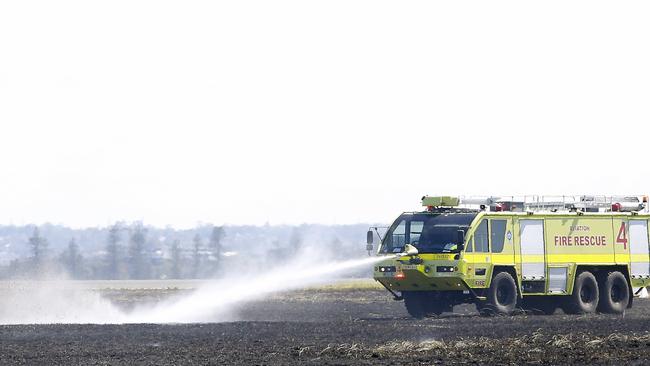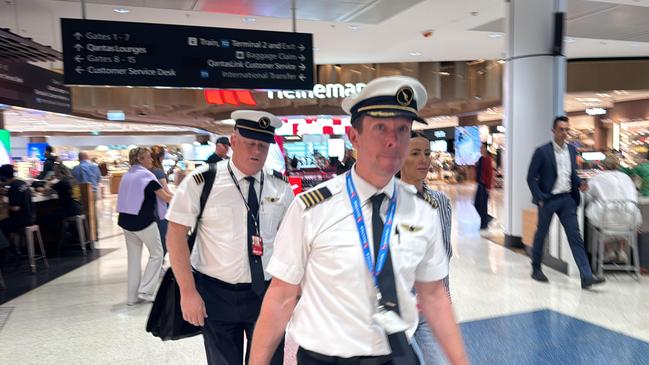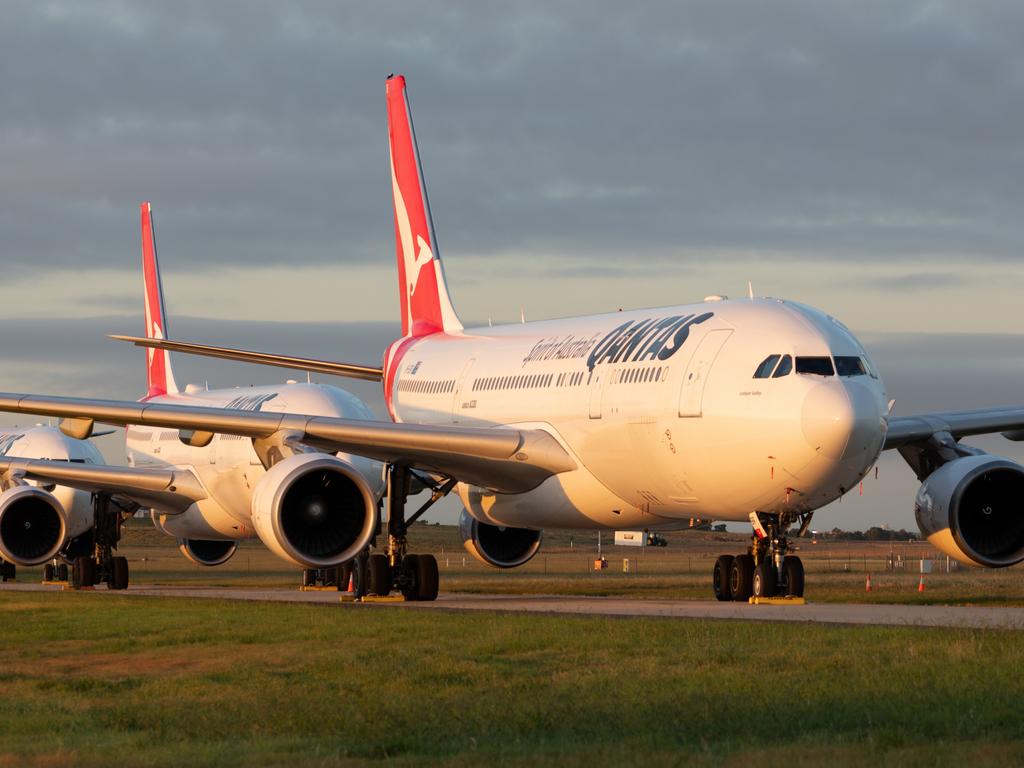Qantas takes off two more engines from Boeing 737s after Sydney Airport flight failure
Two more ageing engines from Qantas’s Boeing 737s have been removed since a flight from Sydney suffered engine failure on takeoff and sparked a grassfire | WATCH
Business
Don't miss out on the headlines from Business. Followed categories will be added to My News.
A Qantas Boeing 737 engine that failed on takeoff from Sydney Airport had been earmarked for removal within weeks, with monitoring by manufacturer GE showing it was close to end of life.
All engines in the Qantas fleet are constantly monitored for performance in an effort to minimise the risk of failure in flight.
On November 8, the right CFM-56 engine on VH-VYH surprised pilots taking off on flight QF520 to Brisbane, when a loud bang signalled something was terribly wrong.
Hot metal fragments expelled from the tailpipe sparked a grassfire near the runway as the 19-year-old 737 struggled to gain altitude on one engine, leaving scores of passengers shaken.
After circling offshore while pilots ran through checklists, the flight returned to Sydney for an uneventful landing with emergency vehicles standing by.
Engineers moved swiftly to remove the lifeless engine on return, and Qantas ordered two more CFM-56 engines come off other 737s, after learning they too were due for replacement soon.

Qantas chief pilot Dick Tobiano said the removal of those engines was merely a “considered response to provide further buffers against regulated replacement limits”.
“This action was not because of an identified common fault,” said Captain Tobiano.
“Together with CFM, engineering continues to monitor all engines across our fleet in real-time with regular inspections conducted of the compressor, combustion chamber and turbine sections using video borescope equipment.”
An engineer who spoke to The Australian on the condition of anonymity said all airlines were trying to push engines as far as they could go because of a global shortage.
He said the practice was not unsafe, with the “trend monitoring” undertaken by CFM typically very accurate in terms of showing how long an engine could last.
“Engines are in short supply at the moment and have been for a while, so what normally happens is that each twin-engine aircraft gets one that’s older and one that’s early or mid-cycle,” said the engineer.
“Boeing 737s are certified to fly on one engine for three hours.”

The Australian Transport Safety Bureau was investigating the engine failure on flight QF520 with a final report due before mid-2025.
A video of the engine following the incident showed chunks of metal missing from the blades of the turbine.
The engineer said it was believed a low pressure turbine blade became “liberated” during the takeoff roll, causing damage to the engine with debris shooting out of the tailpipe.
A recording of air traffic control at Sydney Airport revealed the pilot reporting an engine fire and asking if there was anything on the runway.
The air traffic controller responded “there is now fire, it looks like there has been an explosion and there are bits all over the runway”.
“I would suggest the engine is gone,” said the controller.
Passengers praised the calmness of the cabin and flight crew throughout the incident, which shut down the Sydney Airport runway for several hours.
The engineer said due to the fact the metal fragments from the turbine did not pierce the aircraft structure, the engine failure was considered to be “contained” as opposed to “uncontained” like the near disastrous flight QF32 from Singapore in 2010.
Captain Tobiano said the 737 involved had since returned to service, after getting a replacement engine.
“Globally the CFM-56 (engine) family has accumulated more than one billion flight hours and the rate of failures is extraordinarily low,” he said.
“Our rates are consistent with world fleet failures for engines of similar age and operating in similar environments.”
Since 2014, the ATSB has investigated 18 incidents of engine failure or malfunction, nine of which involved Qantas or Jetstar aircraft including A380s, A330s, A320s and 787s.
In 2023, a Qantas 737 flying from Auckland to Sydney experienced engine failure mid-flight, sparking a “mayday” call from the pilots. The aircraft landed safely on one engine about an hour later.
More Coverage
Originally published as Qantas takes off two more engines from Boeing 737s after Sydney Airport flight failure





